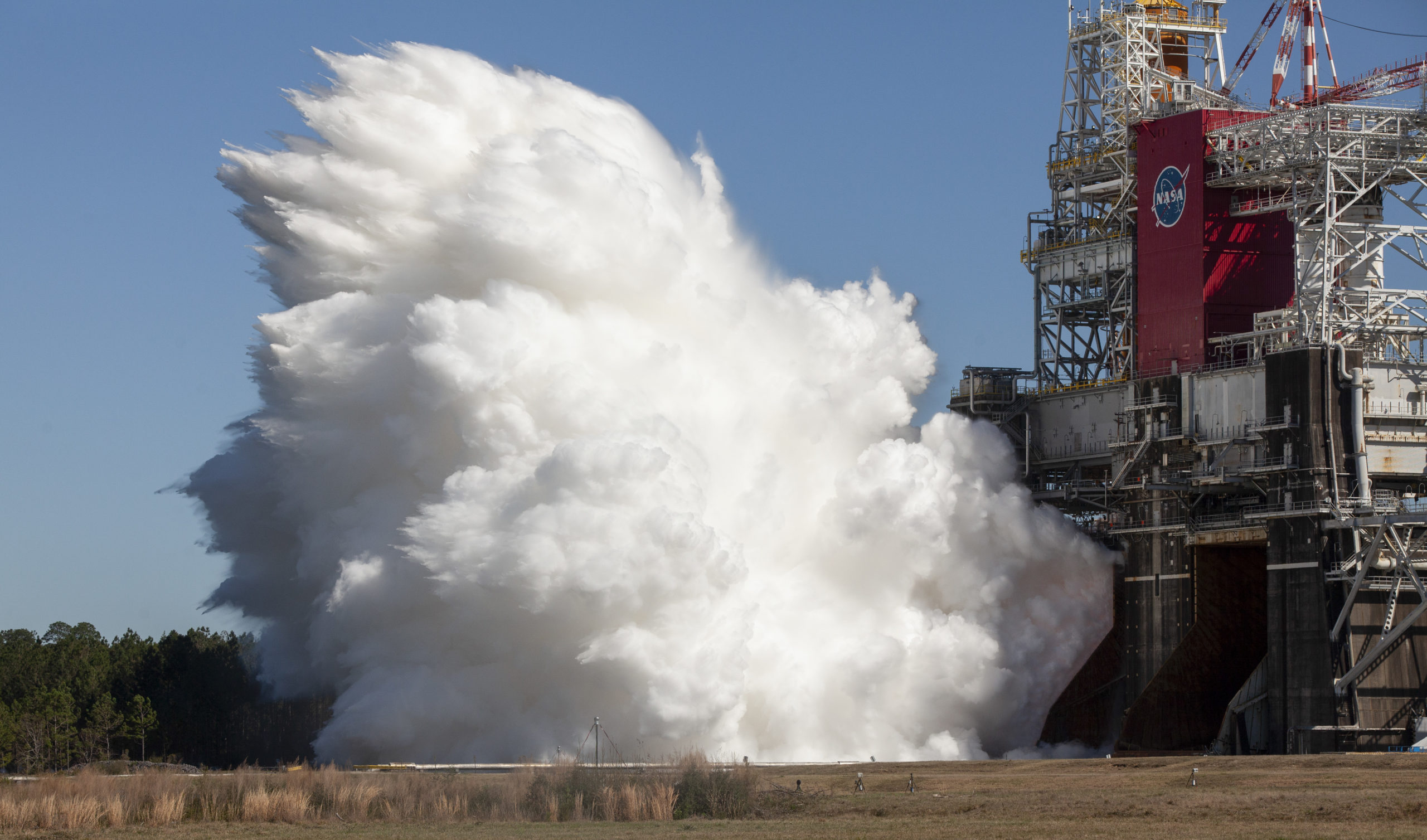
For SpaceUpClose.com & RocketSTEM
CAPE CANAVERAL, FL – The maiden core stage of NASA’s Space Launch System (SLS) mega Moon rocket is on its way by barge to NASA’s Kennedy Space Center in Florida after departing the agency’s Stennis Space Center near Bay St. Louis, Mississippi, following successful completion of the critical and long awaited Green run hot test fire of the four engines mounted on at the base of the stage.
The hot fire was the culmination of the Green Run series of tests of its design and systems on the B-2 test stand in Mississippi.
The core stage is now in route to KSC on the specially elongated Pegasus barge for arrival sometime Tuesday, April 27. Pegasus was previously used to ship the External Tanks (ET) for NASA’s three decade long space shuttle program.

KSC is its final stop prior to NASA’s launch of the Artemis I mission around the Moon.
“At Kennedy, the core stage will be integrated with the rest of the SLS rocket and the Orion spacecraft in preparation for launch,” said NASA.
“Through the Artemis program, NASA will return humans, including the first woman and first person of color, to the Moon and prepare for eventual journeys to Mars.”
NASA successfully completed the critical and long awaited hot test fire of the core stage engines for agencies the Space Launch System (SLS) human rated mega Moon rocket Thursday afternoon, March 18, on a test stand in Mississippi thus enabling its shipment to the Kennedy Space Center.

The shipment to KSC is paving the path for launch of the uncrewed Artemis-1 moon mission late this year or early next year followed by future Artemis missions with astronauts to orbit and land on the surface.
“NASA is building SLS as the world’s most powerful rocket to serve as the backbone of the Artemis program and the nation’s future deep space exploration missions. The SLS core stage, measuring 212 feet tall and 27.6 feet in diameter, is the tallest flight component ever built by NASA. It is equipped with four RS-25 engines to help power the SLS rocket at launch. Built by prime contractor Boeing at NASA’s Michoud Assembly Facility in New Orleans.”
Pegasus is following a similar route to that of the pathfinder core stage in September 2019. See my earlier articles and photos

Ken will be onsite for the Pegasus arrival at KSC with SLS core stage 1

Watch for detailed reports upcoming.
Meanwhile teams at KSC have stacked the Artemis 1 SLS SRB boosters and have finished assembly of the Orion crew vehicle.
The SLS core stage for #Artemis I will arrive to @NASAKennedy following the Green Run hot fire test. A 325-ton crane will be used to stack the core stage on the mobile launcher to join it with the twin solid rocket boosters.
MORE ON LAUNCH PREP >> https://t.co/9SzQaBOROO pic.twitter.com/MlO663y7QE
— NASA_SLS (@NASA_SLS) March 16, 2021
Watch Ken’s continuing reports about Artemis and NASA missions, SLS, Orion, SpaceX, Starlink, Commercial Crew and Starliner and Crew Dragon and onsite for live reporting of upcoming and recent SpaceX and ULA launches including Crew 1 & 2, Demo-2, ISS, X-37B, Solar Orbiter, Mars 2020 Perseverance and Curiosity rovers, NRO spysats and national security missions and more at the Kennedy Space Center and Cape Canaveral Space Force Station.
Stay tuned here for Ken’s continuing Earth and Planetary science and human spaceflight news: www.kenkremer.com –www.spaceupclose.com – twitter @ken_kremer – email: ken at kenkremer.com
Dr. Kremer is a research scientist and journalist based in the KSC area, active in outreach and interviewed regularly on TV and radio about space topics.
………….
Ken’s photos are for sale and he is available for lectures and outreach events
Please consider supporting Ken’s work by purchasing his photos and/or donating at Patreon:
https://www.patreon.com/kenkremer
x



